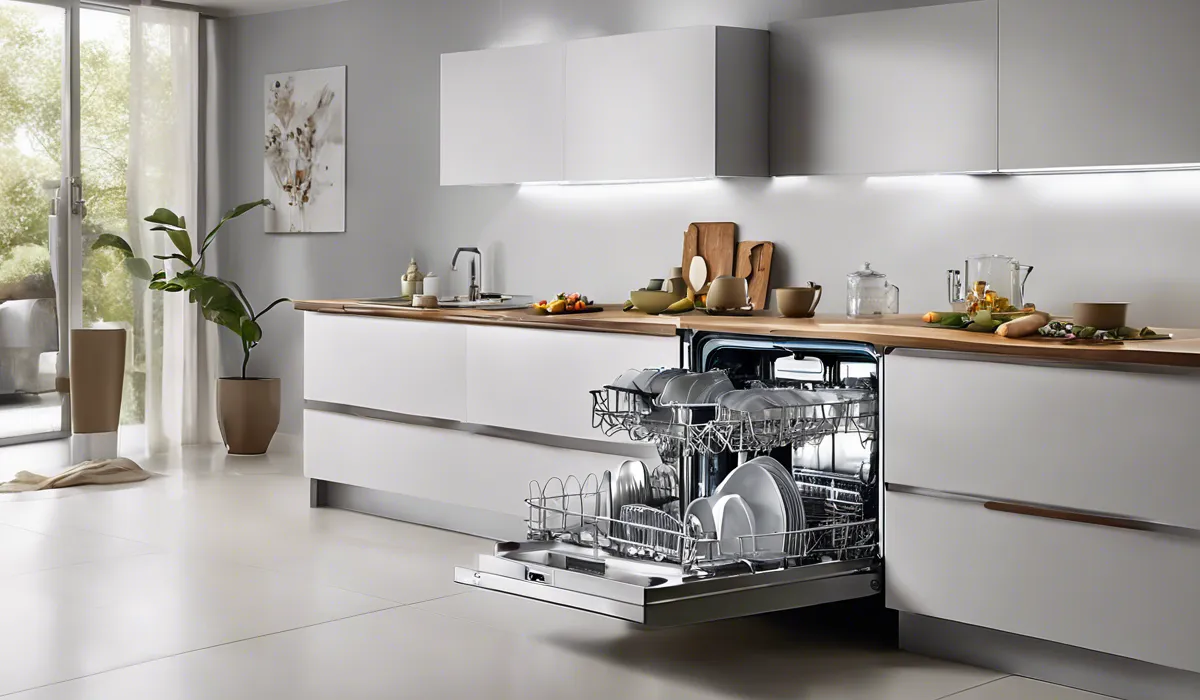Can You Install Dishwasher Without Countertop? DIY Tips!
Yes, you can install a dishwasher without a countertop by using a freestanding or portable model. These units are designed for flexibility and don’t require a built-in space. However, built-in dishwashers typically need countertop support for stability and proper operation.
Assessing the Installation Environment

Understanding the Role of Countertops in Dishwasher Support
Countertops usually provide more than just a workspace in your kitchen; they also offer critical support for appliances like dishwashers. Built-in dishwashers are designed to be secured beneath a countertop, which helps keep them stable during operation.
Without this support, there are concerns about the dishwasher tipping or moving. It is essential to understand this before moving forward with an installation that lacks this traditional support structure.
Exploring Alternative Support Options for Dishwasher Installation
For those who need to install a dishwasher without a countertop, alternative support options exist. Freestanding or portable dishwashers are excellent solutions as they are designed to operate without being anchored to a countertop.
These models often have finished sides and a top that can serve as additional kitchen space when not in use. Ensuring that your alternative has proper support is crucial for both function and safety.
Evaluating the Space and Cabinetry Structure for Dishwasher Placement
Before installing a dishwasher without a countertop, evaluate the available space and the surrounding cabinetry. It’s essential to measure the dimensions of the dishwasher to ensure it will fit in the desired location.
Additionally, examine the cabinetry structure to determine if it can provide lateral support or if modifications are necessary.
Considering the Importance of Leveling and Stability for Standalone Dishwashers
Leveling and stability are non-negotiable for standalone dishwashers. A level appliance prevents operational issues and excessive noise.
Moreover, it ensures that water drains correctly, reducing the risk of leaks. Adjustable feet or shims may be used to achieve a level position, and these should be checked regularly as part of your maintenance routine.
Installation Process for a Dishwasher without a Countertop

Preparing the Necessary Tools and Materials
Before beginning the installation, gather all the necessary tools and materials. You will need a screwdriver, adjustable wrench, level, tape measure, and potentially a drill if you need to secure the dishwasher to adjacent cabinetry.
Additionally, ensure you have the water supply line, drainage hose, and electrical supplies on hand.
Step-by-Step Guide to Installing a Freestanding or Portable Dishwasher
To install a freestanding or portable dishwasher, first read the manufacturer’s instructions. Place the dishwasher in the desired location, making sure it is close enough to the necessary hookups.
Connect the water supply, usually located under the kitchen sink, and ensure the drainage hose reaches the sink drain or garbage disposal.
Plug the dishwasher into an electrical outlet, and then use a level to verify that the appliance is perfectly horizontal. Adjust the feet as needed to achieve stability.
Securing the Dishwasher to Adjacent Cabinetry or Walls
If the dishwasher is not a freestanding model and requires additional support, it can be secured to adjacent cabinetry or walls. This step is crucial to prevent the dishwasher from tipping over.
Use brackets or mounting kits provided by the manufacturer, and ensure the screws are properly anchored into the cabinetry or wall studs.
Connecting Water Supply and Drainage Lines Without Countertop Support
Connecting the water supply and drainage lines without countertop support can be straightforward if you plan accordingly.
The water supply line should connect to the dishwasher’s inlet valve, and the drainage line should be looped up high beneath the sink before being directed to the drain or disposal unit. This loop prevents backflow and keeps your dishwasher functioning correctly.
Electrical Setup and Considerations for a Dishwasher Without a Countertop
For electrical setup, ensure that the dishwasher is plugged into a grounded outlet. If the outlet is not conveniently located, an electrician may need to install a new one.
Always follow local codes and the manufacturer’s guidelines when dealing with electrical components.
Testing the Installation for Leaks, Stability, and Performance
Once everything is connected, test the dishwasher by running a short cycle. Check for leaks at all connection points.
Observe the dishwasher during operation to ensure it remains stable and does not shake or move. Listen for any unusual noises that may indicate an issue with the installation.
Maintenance and Safety Considerations

Tips for Ensuring the Long-Term Stability of a Countertop-less Dishwasher Installation
To maintain long-term stability, regularly inspect the leveling of your dishwasher and adjust as needed.
Check the brackets or mounts that secure the dishwasher to surrounding structures to ensure they are tight and secure. Keep the area around the dishwasher clean and free from obstructions that could affect its stability.
Routine Maintenance Tasks to Perform on a Freestanding Dishwasher
Routine maintenance is essential for the longevity of your dishwasher. Clean the filters regularly, inspect the spray arms, and occasionally run a cleaning cycle with a dishwasher cleaner. Ensure that the seals around the door are clean and in good condition to prevent leaks.
Safety Precautions to Prevent Tipping and Movement During Operation
Implement safety precautions to prevent the dishwasher from tipping or moving. Always load the dishwasher evenly, and do not open the door forcefully. If you have children, educate them about the importance of not hanging on the dishwasher door or pulling on it excessively.
Legal and Warranty Implications of Unconventional Dishwasher Installations
Finally, be aware of the legal and warranty implications that may arise from unconventional dishwasher installations. Some manufacturers may void the warranty if the dishwasher is not installed according to their guidelines.
Additionally, local building codes may have specific requirements for appliance installations. Ensure that your installation complies with these codes to avoid potential legal issues.
FAQs About Installing a Dishwasher Without a Countertop
Can I install any type of dishwasher without a countertop?
No, built-in dishwashers typically require a countertop for stability, but freestanding or portable models can be installed without one.
Do freestanding dishwashers need special installation?
Freestanding dishwashers are designed for flexibility and typically don’t require the special installation that built-in models do.
Are portable dishwashers a good alternative to built-in models?
Yes, portable dishwashers are a great alternative if you lack the space for a built-in model or do not have a countertop.
Can portable dishwashers be connected to a kitchen faucet?
Yes, most portable dishwashers can be connected directly to a kitchen faucet using an adapter.
Is it necessary to secure a freestanding dishwasher?
It’s not necessary to secure a freestanding dishwasher to countertops or cabinetry, but it should be placed on a stable and level surface.
Final Thoughts
Freestanding or portable dishwashers provide a convenient solution for those lacking a countertop, offering the necessary flexibility and ease of installation.
For traditional built-in models, however, countertop support is essential for maintaining stability and ensuring proper functionality.
Useful Resources
- https://www.tn.gov/content/dam/tn/revenue/documents/rulings/sales/20-11.pdf
- http://www.fsis.usda.gov/food-safety/safe-food-handling-and-preparation/food-safety-basics/washing-food-does-it-promote-food
- https://www.oplc.nh.gov/sites/g/files/ehbemt441/files/inline-documents/sonh/electricians-2020-amendments-bulletin.pdf





